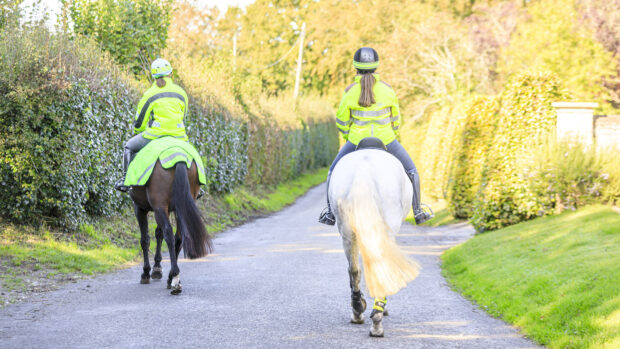Findings from the UK’s “biggest ever” equestrian road safety study have revealed “truly shocking” statistics on the experiences of riders and carriage drivers.
A new study commissioned by the British Horse Society (BHS), funded by the Department for Transport (DfT) has explored equestrians’ experiences on the roads. The one-year study conducted by researcher Danica Pollard, involved four elements; a review of existing published DfT and BHS data, a survey of 6,000 equestrians looking at how frequently they used roads and off-road routes and what influenced their ability to do so, qualitative work with focus groups and interviews, and a second survey focusing on road safety in summer this year, which generated 7,124 responses.
Of those surveyed, only 3% of equestrians said they never felt stressed or anxious when using the roads, and 43% did so more than half the time. The main contributors to stress and anxiety on the roads were considered to be other road users (93%). Of the respondents, 78% said they had experienced an incident while using roads with their horses that they did not officially report; only 31% had previously reported an incident to the police and/or BHS. There were 322 equestrians who said they had been involved in a road incident in the previous year.
“The worry that equestrians face is not only affecting their enjoyment but it is also negatively impacting the amount of exercise horses and their riders and handlers are getting,” said a BHS spokesman.
“The majority of equestrians agreed that exercise was important to maintain their horses’ mental and physical health. Most felt they could not exercise their horse adequately without using roads; 60% felt that having to use or cross certain roads limited their ability to exercise with their horses and between 60 and 70% thought they would exercise their horses more frequently and cover greater distances if they felt safer when using roads.”
BHS director of safety Alan Hiscox said the study has “unearthed a number of truly shocking statistics and facts” that will hopefully now drive action.
“We need more innovation around safety, an increase in the use of [helmet/body] cameras, and improvements to highways and motoring policies like reduced speed limits, warning signs, more non-slip road surfaces and Highway Code amendments,” he said.
“We also need more safe places to cross, and improved off-road riding facilities. And, ultimately, we need behavioural change from anyone currently using the roads who is not following best practice around safety and consideration for other road users.”
Equestrians can report incidents to the BHS via the Horse I app. The app is free to download and enables riders to “quickly and easily” submit details of incidents that have negatively affected their safety.
You might also be interested in:

New safety app allows riders to report incidents ‘quickly and easily’
Riders can report any problems with a road or off-road user, slippery road surfaces, dogs, low-flying aircraft, nuisance drones or

How riders can do all possible to improve their safety on the road

Subscribe to Horse & Hound magazine today – and enjoy unlimited website access all year round
Horse & Hound magazine, out every Thursday, is packed with all the latest news and reports, as well as interviews, specials, nostalgia, vet and training advice. Find how you can enjoy the magazine delivered to your door every week, plus options to upgrade your subscription to access our online service that brings you breaking news and reports as well as other benefits.



